…Hasaki is the “cutting edge” of the Japanese blades. This name comes from the wooden body, which has an average tickness of 13mm (1/2″)...
There is almost a primordial power in the discovery, the feeling you get since childhood, when you disassemble a seemly usual object and you discover inside it a completely unknown universe, this feeling reaches a superior level when you understand every single part and how each part interacts with the other. breaking down into parts was used to optimize manufacturing…I don’t care too much about it because every guitar is almost one piece but, due to its adaptability, it has the advantage of expediting the research for the demanded sound. the interesting and funny thing is that a guitar like this has more than 160 parts, each one with its importance.
From the beginning I was interested in crafting something original. I didn’t want to do something “already seen”, but I wanted this novelty revealed little by little, that the guitar was recognize as such, neither a nosense nor an academic exercise.
In designing the instrument, I took inspiration from concepts and proportions known since ancient times, that have proved useful, as it happens, also for the sound.
Every single part is strongly defined, both formally and functionally and if frontally the guitar is recognized as a guitar, if you change point of view, you can discover differences from traditional instruments. For example, no one ever looks at the back of a guitar, in this case is essential to understand the operation.
The guitar has a main aluminum frame. This aluminum frame has a central part and four lateral arms, the neck, pickups and strings are connected to the main part, while the wooden body is connected to the lateral arms. This wooden body is the soundboard of the guitar, free to vibrate over these four points, only the bridge is directly in contact with the wooden body. The bridge is crafted in one pieces without moving parts to maximize the transfert of vibrations, as usual for classical instruments, the wooden body is crafted from a solid piece of wood and it is tap tuned according to wood species and to the sound you aim to reach. The four connection points come from Chladni’s research on eigenmodes of vibrations of plates. They are chosen to emphasize specific frequencies and find a “correct” electric sound.
Due to the fact that the bridge is fixed, the height of the strings is adjusted by an allen key. Electronics are housed in a single and visible element fixed to one point and with the possibility to detach it for changing, modding or repairing.
Unsatisfied with what is on the market and resolute to create a completely original instrument, from the beginning I decided to make my own pickups to supervise directly the final result.
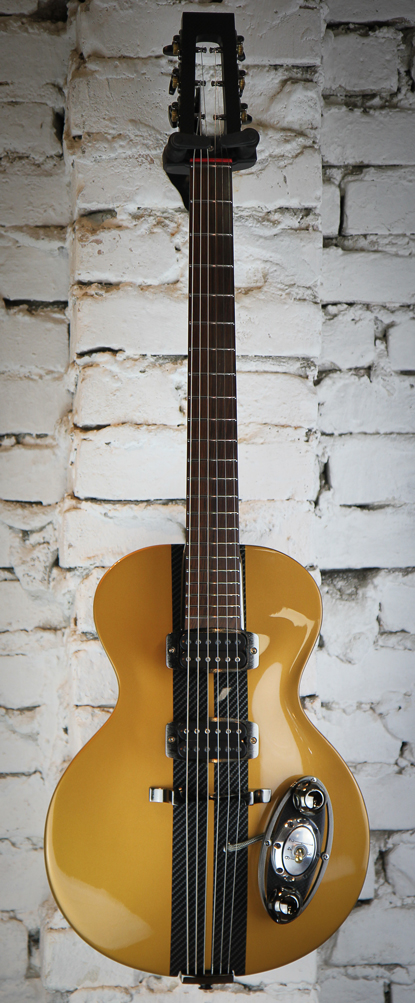
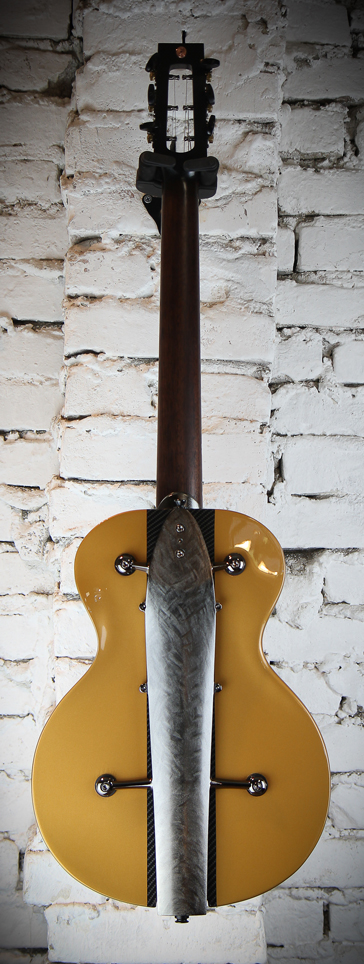
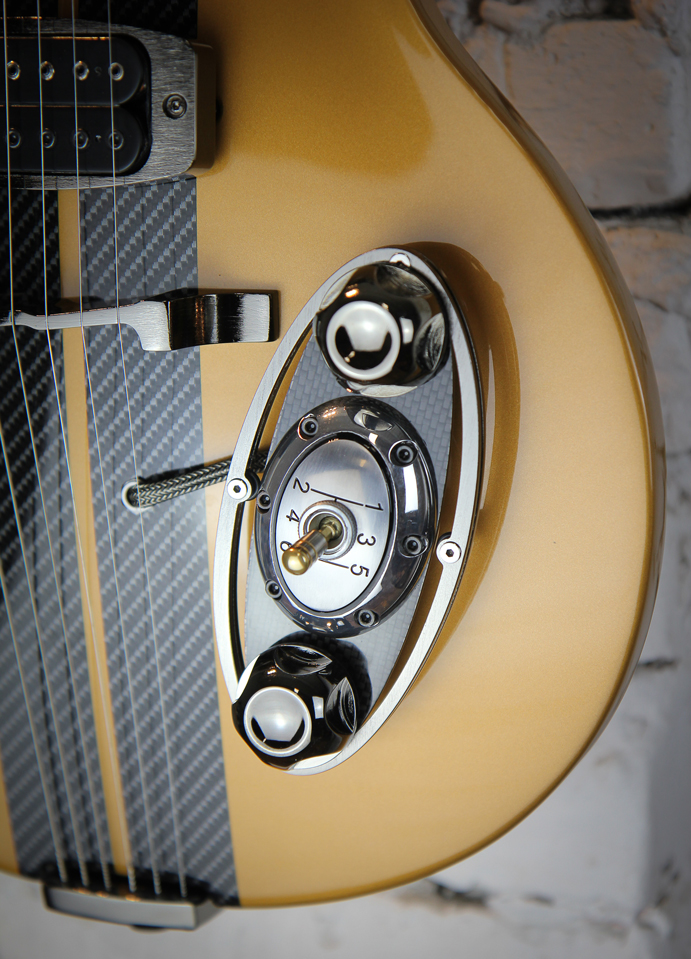
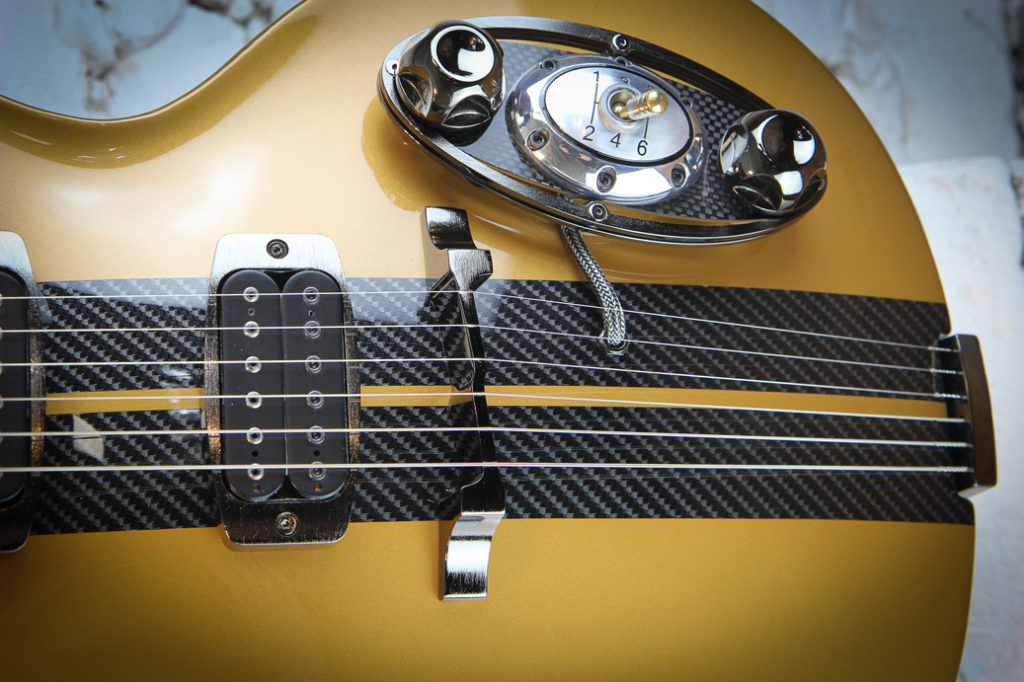
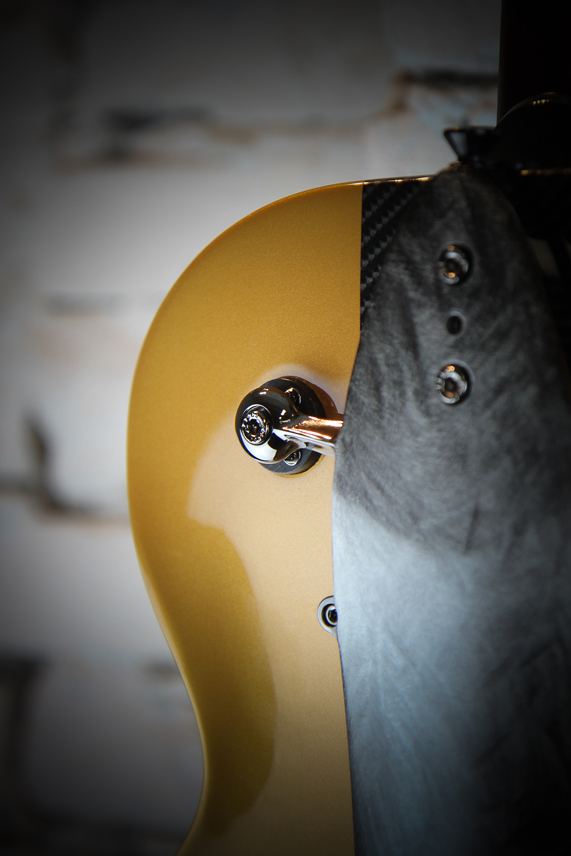
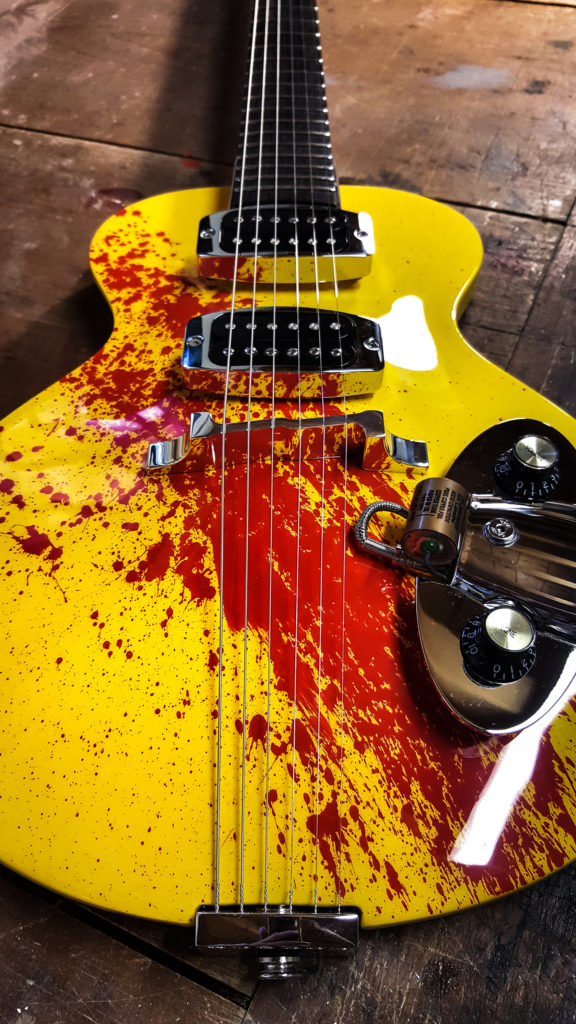
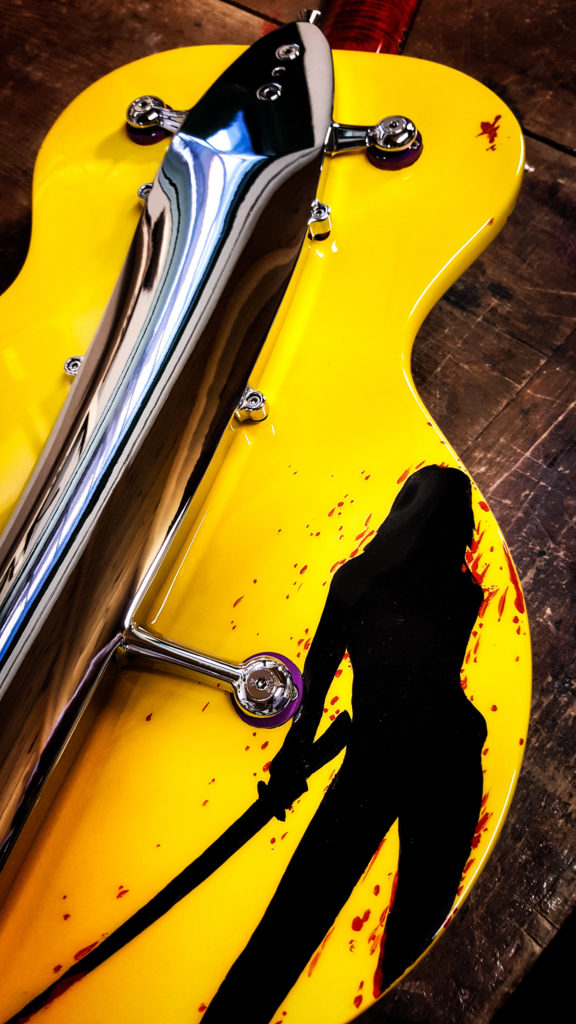
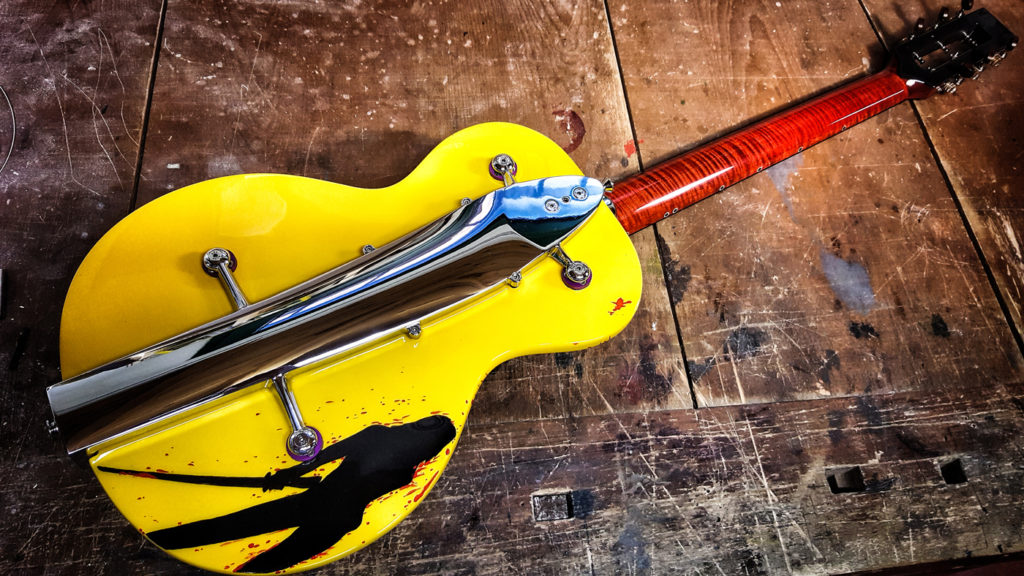
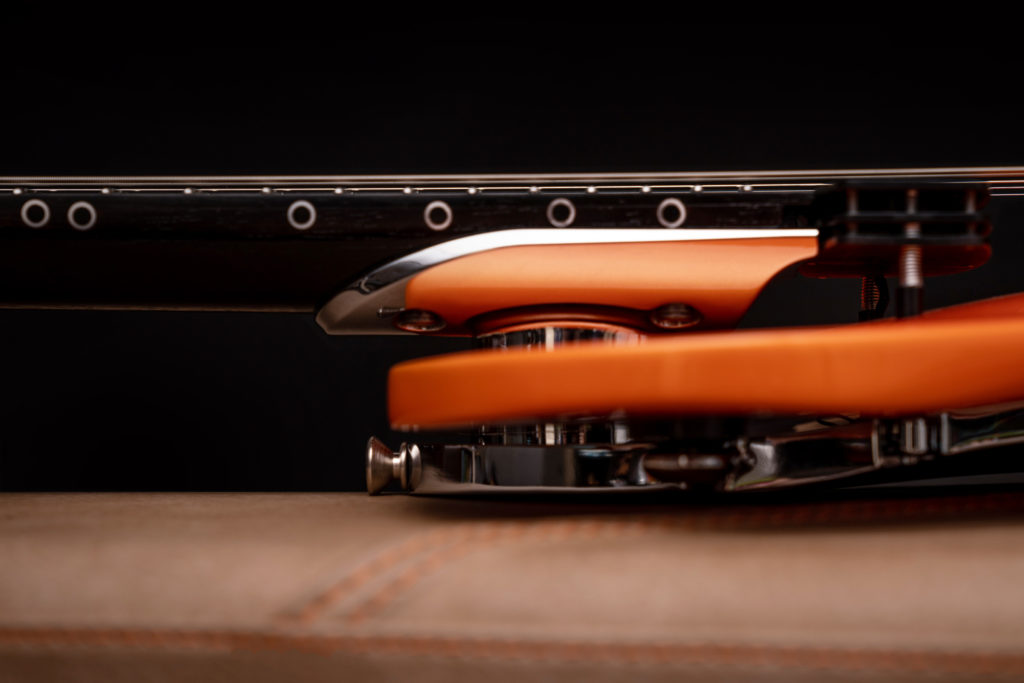
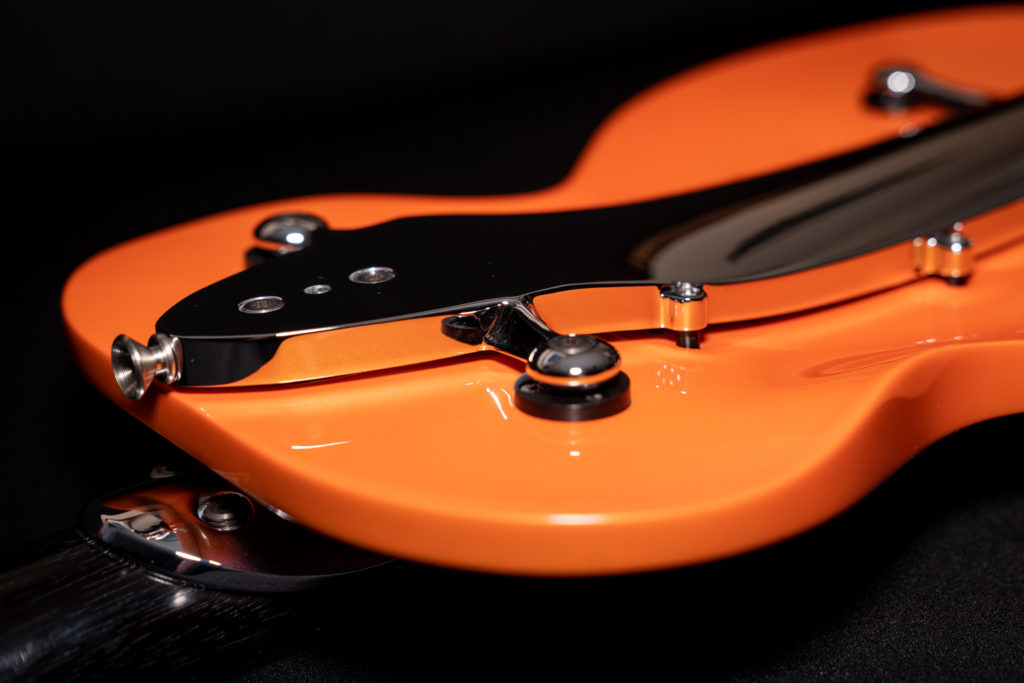
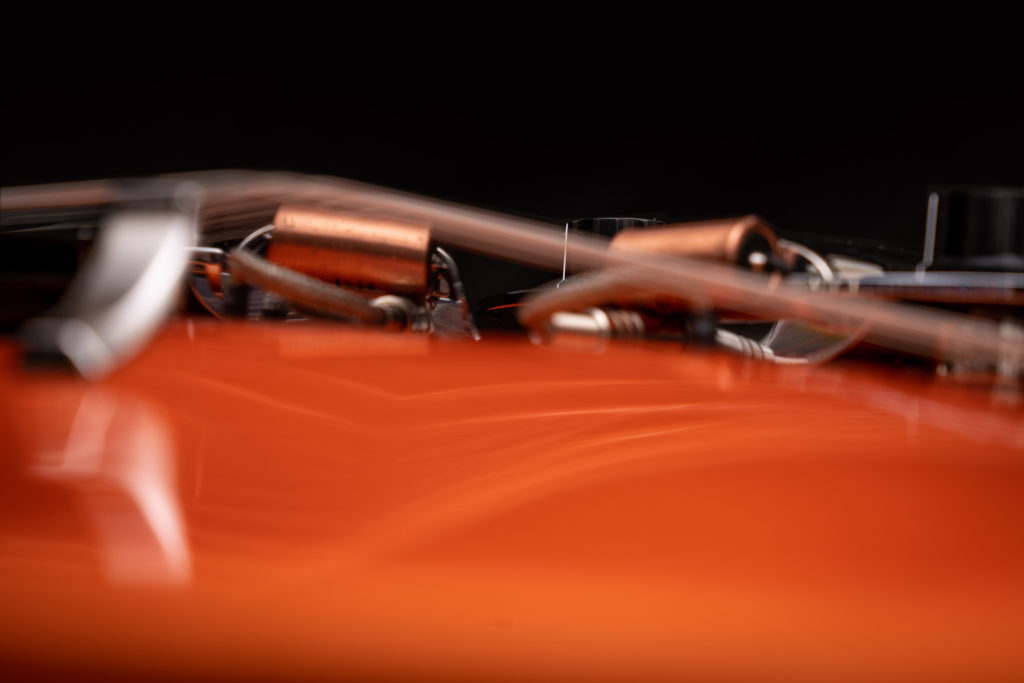
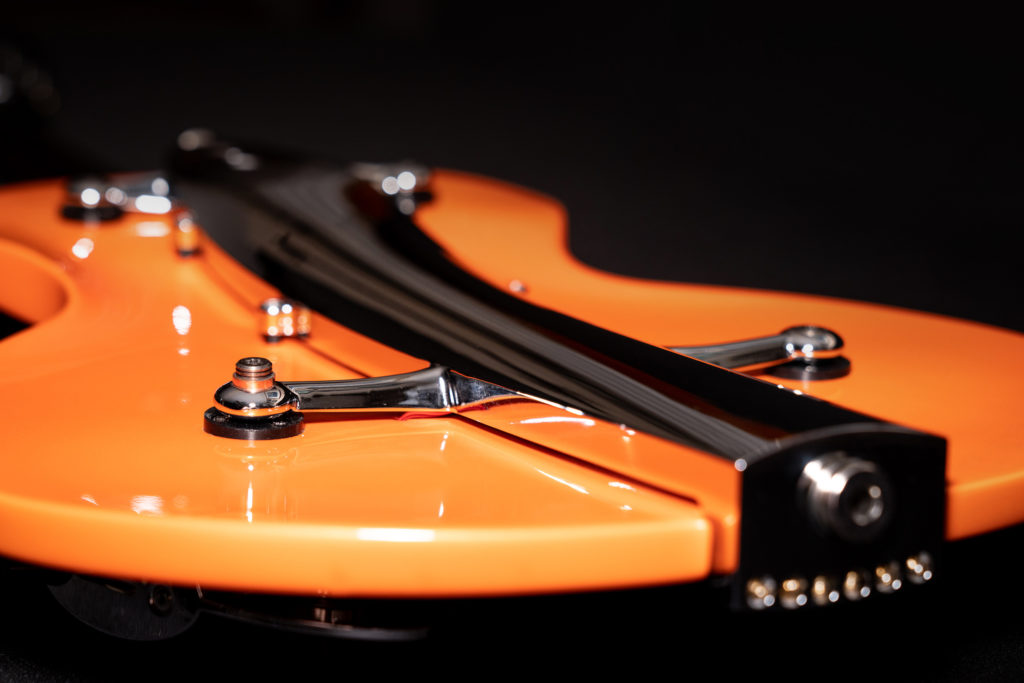
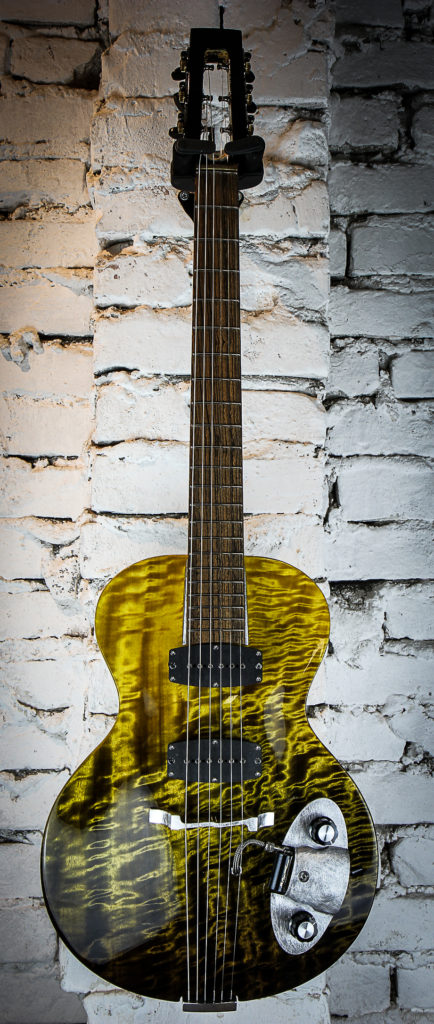
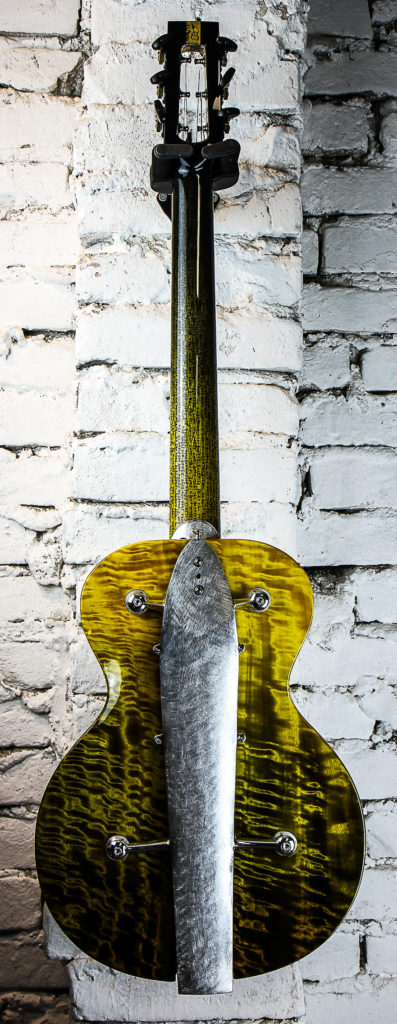
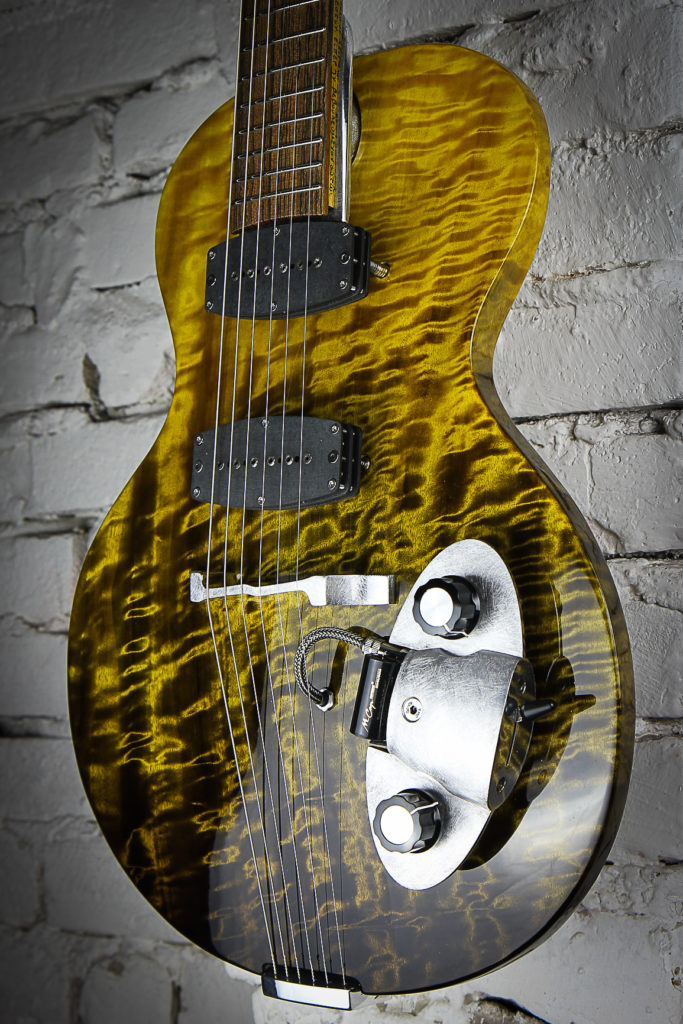
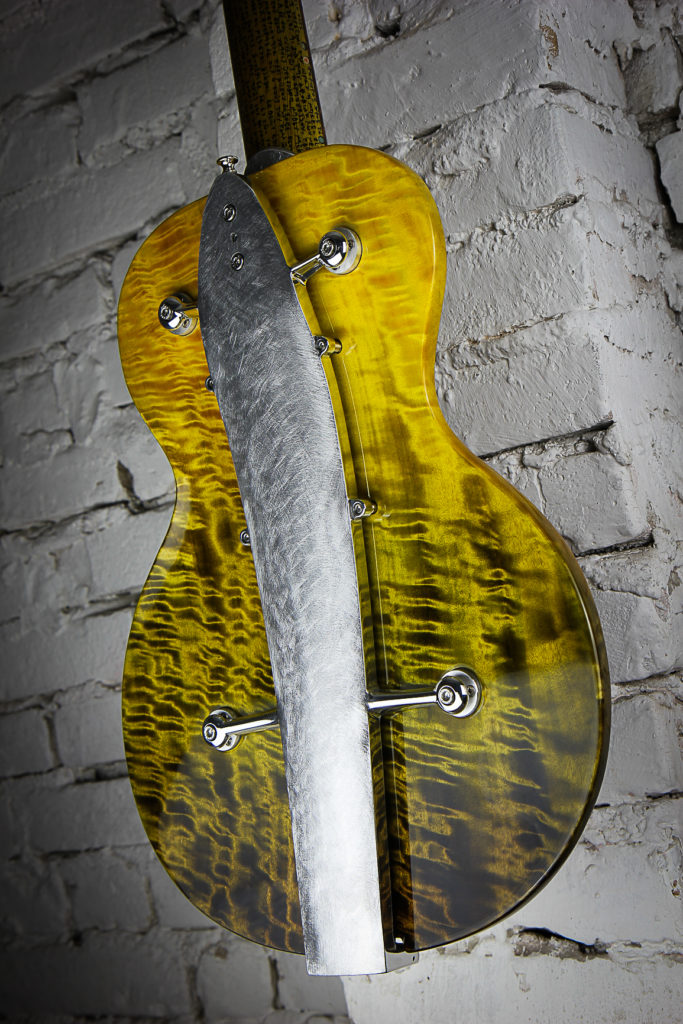
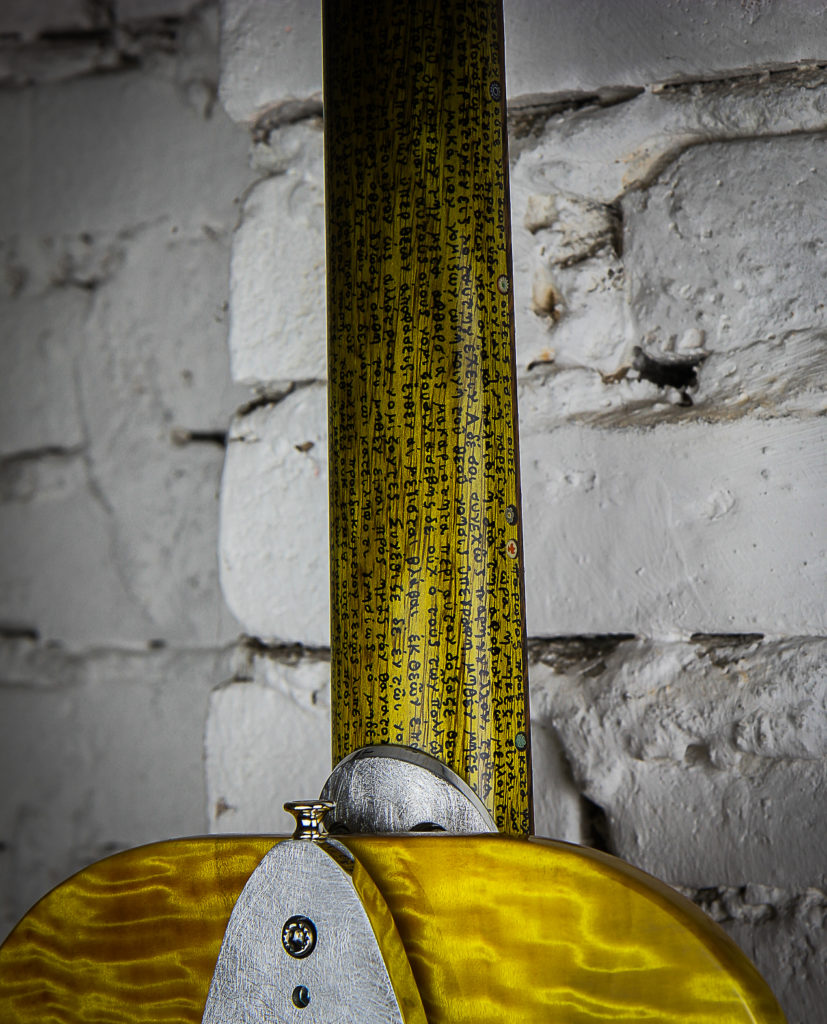
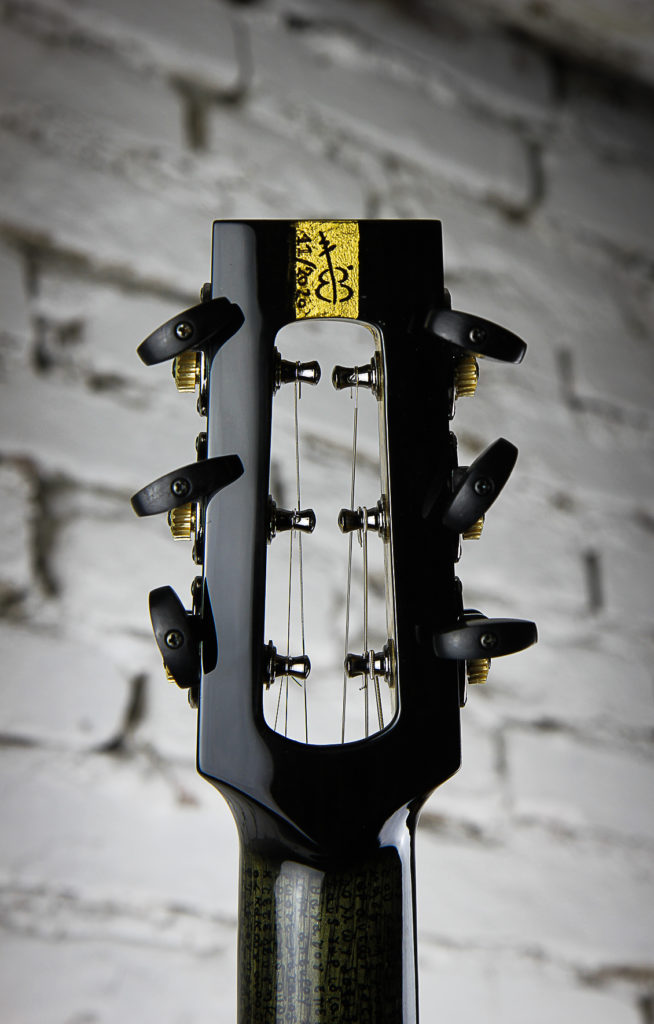
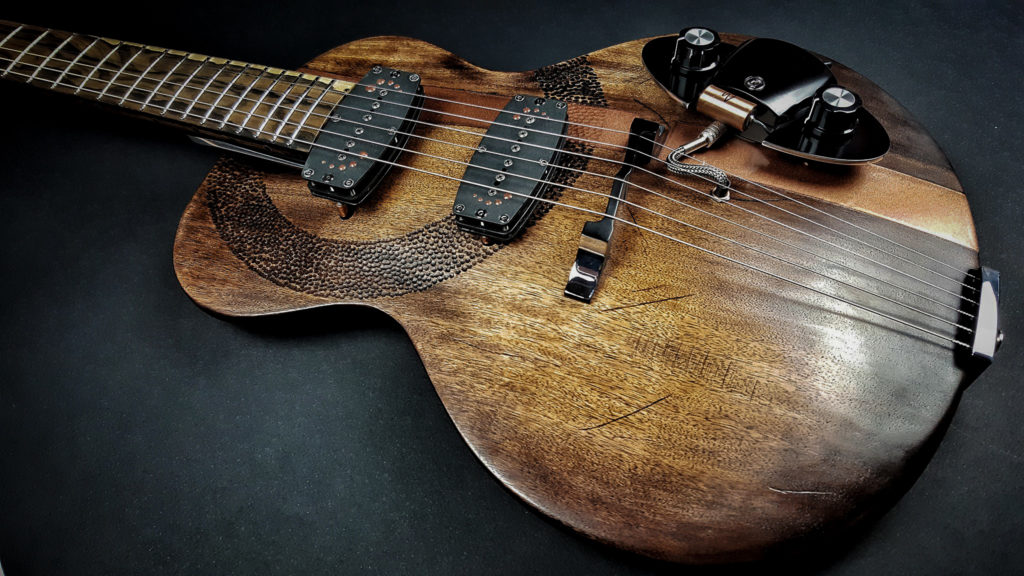
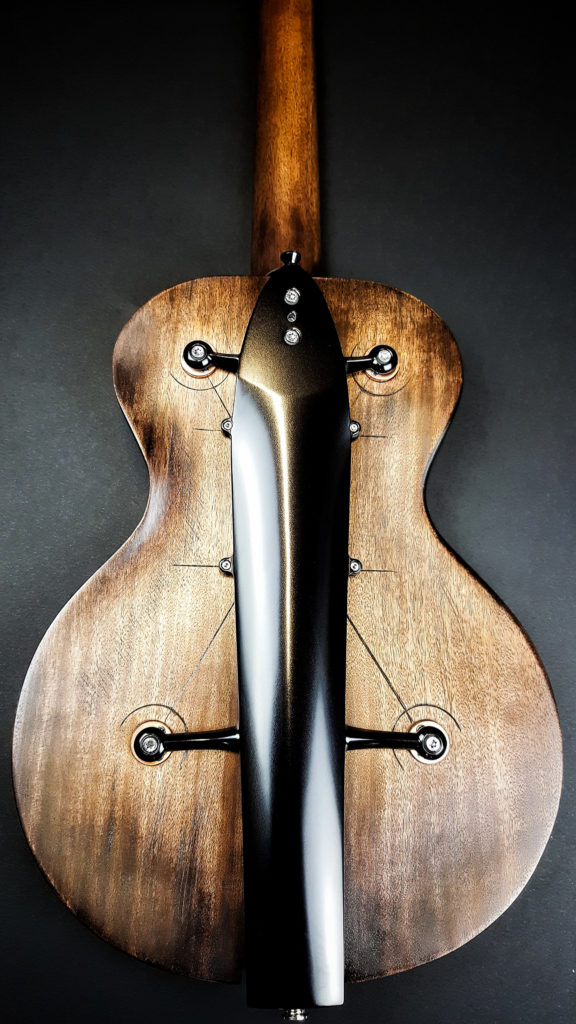
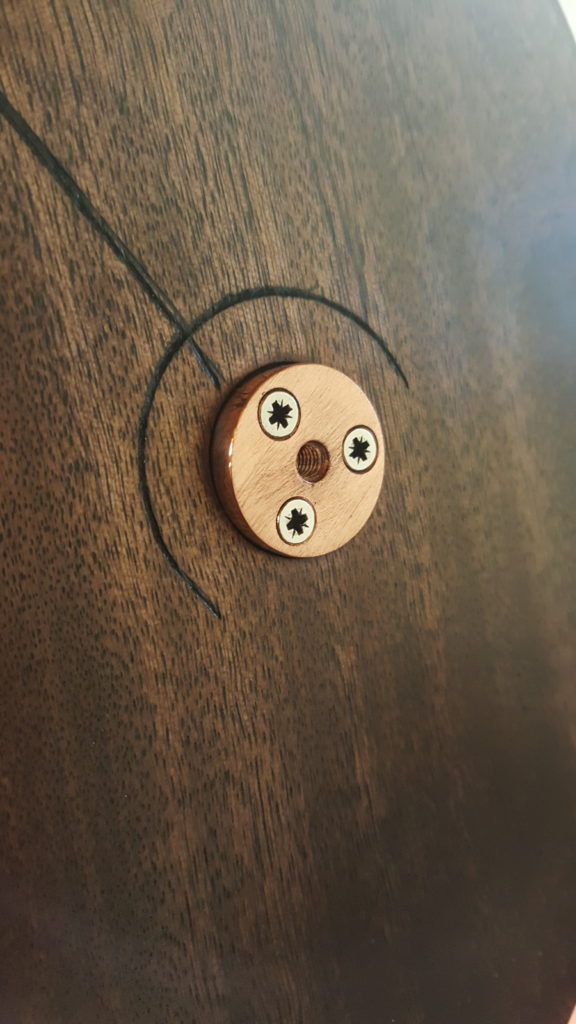
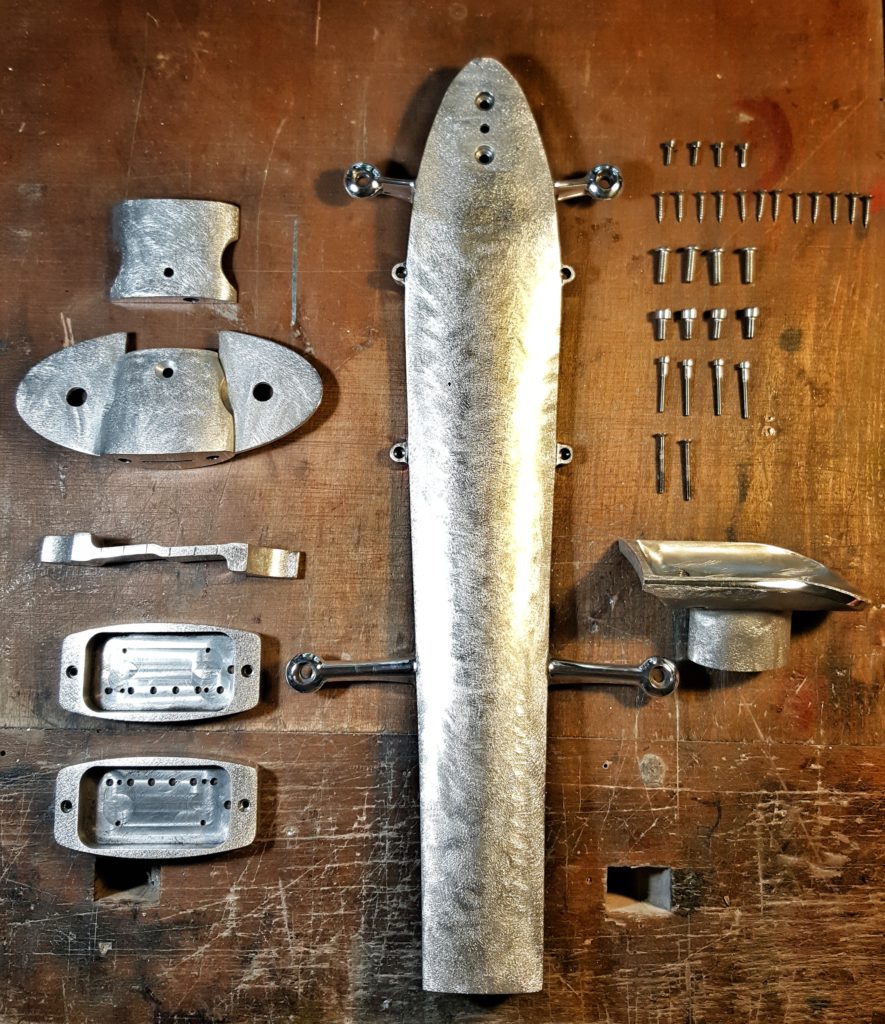
Metal parts
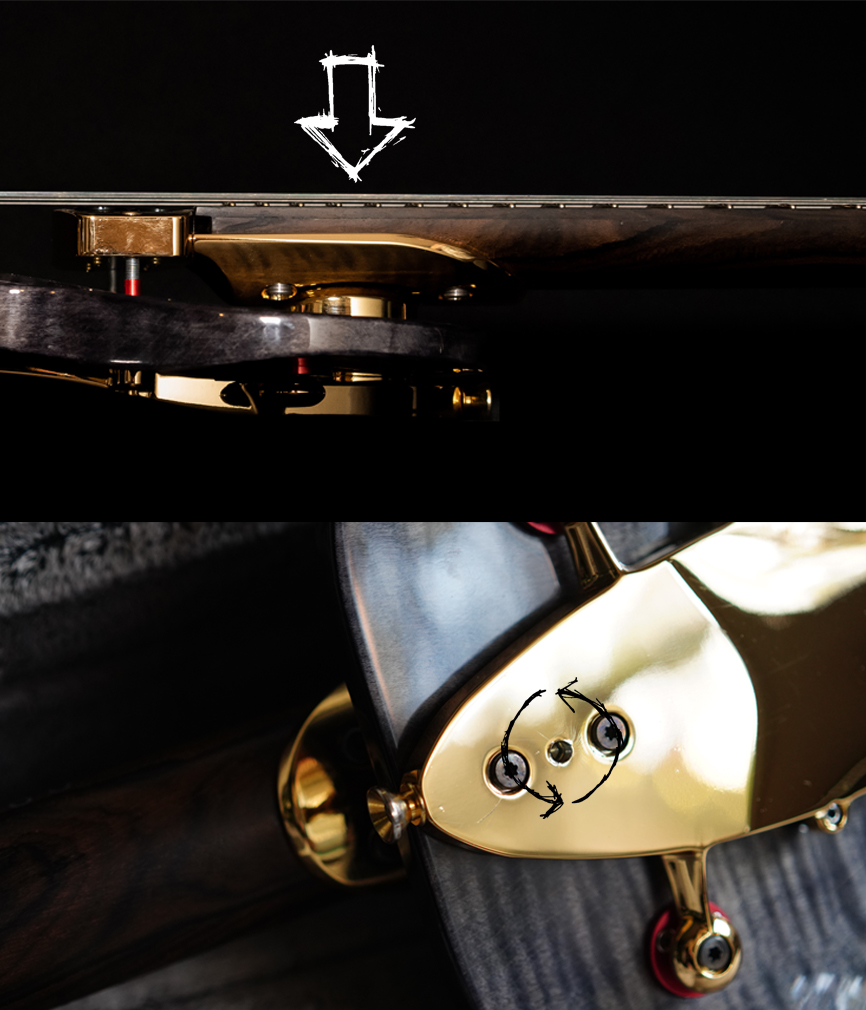
To lower the action turn counterclockwise the central allen key on the back of the guitar, in this way the neck goes up.
To higher the action turn clockwise the central allen key on the back of the guitar, in this way the neck goes down.
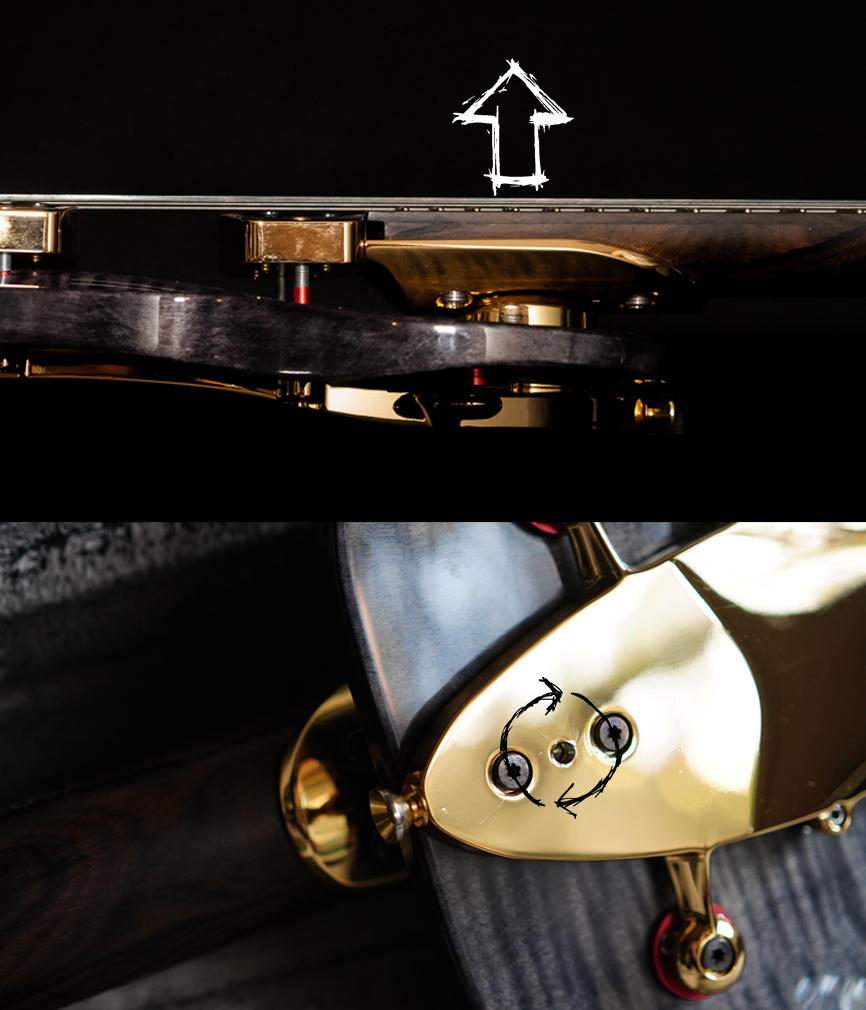
In my opinion aluminum is a very musical material, with “organic” response and long sustain…